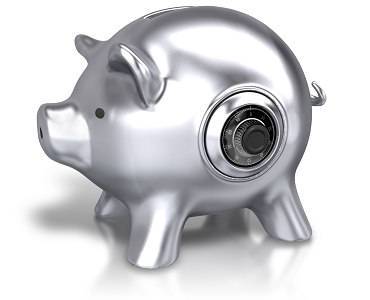3 An example of business accounts
We will now continue the Bike-a-lot example, this is not intended to be an accountancy lesson, rather we are using basic figures to make some simple points.
We will look at Bike-a-lot’s’s finances to demonstrate turnover, gross profit and net-profit. (To open the case study in a new tab on a PC, hold down the Ctrl key when clicking.)
Last year Bike-a-lot sold training and tests for £80,000.
The fuel costs for the bikes came to £4000.
The certificate and exam fees came to £6000.
Other expenses, loan for the bikes, rent on premises, insurance and advertising came to £10,000.
Bike-a-lot is not VAT registered.
So the calculations are shown in Table 1.
| Turnover | The total sales revenue not including any VAT. This is the amount of money received from customers. | £80,000 |
| Gross profit | The total sales revenue taking off the cost of sales, which in this case is the cost of the fuel for the lessons and the certificates and tests that are paid for: £80,000 − £4000 − £6000. | £70,000 |
| Net profit | This is the amount of money left after everything has been paid. So this is the gross profit minus the expenses and other costs. £70,000 − £10,000. This is the amount of money the two trainers can split. It must be entered on their individual tax returns. | £60,000 |
Bike-a-lot has a turnover of £80,000, this is just below the VAT threshold of £82,000 (correct at time of writing) so Bike-a-lot does not have to be VAT registered. What do you think would happen if the sales revenue increased by £2000 and put it into the category for mandatory VAT registration?
Bike-a-lot and VAT
Bike-a-lot operates in quite a competitive market. A typical compulsory basic training course (CBT), the first step to riding, costs around £100. If the turnover for Bike-a-lot increased to put it over the VAT threshold, then they would have to charge VAT at 20% (correct at time of writing). So the cost of the CBT would have to increase to around £120 for Bike-a-lot to make the same gross profit. For a private customer this is a relatively high increase in cost for no extra service and could result in a different training school being chosen.
So the VAT question plays a big part when the small business serves local customers.
Would you suggest they stop working once the turnover reaches £81,999?
Now it is your turn, have a look at the finances for case study 5, Turn-it-round. (To open the case study in a new tab on a PC, hold down the Ctrl key when clicking.)
Activity 3
Use the simplified accounts figures to work out the turnover, gross profit and net profit for Turn-it-round.
- Last year Turn-it-round received funding totalling £147,000 to support 300 prisoners.
- The transport costs for the sessions came to £8000.
- The cost of renting venues for training and seminars came to £12,000.
- Other expenses, staff costs, insurance, general travel and hotel expenses for staff and volunteers, came to £120,000.
- Turn-it-round is registered for VAT on the flat rate scheme paying 12% VAT.
Complete the table and comment on the VAT situation.
| Measure | Explanation | Amount |
| Turnover | ||
| Gross profit | ||
| Net profit* | ||
| VAT comment | ||
Footnotes
* Remember that money from the flat rate scheme is part of the net profit.Comment
Here are our thoughts.
| Measure | Explanation | Amount |
| Turnover | The total amount of funding received is £147,000 before VAT, so this is the turnover. | £147,000 |
| Gross profit | The cost of running the sessions is the transport costs of £8000 and the venue hire of £12,000. The specific activity expenses are not broken down so the gross profit is £147,000 – £20,000. | £127,000 |
| Net profit | Because the staff are paid salaries, business owner, Charlie, gets money this way, the salaries are expenses. So the net profit is £127,000 – £120,000 = £7000. You also add in the money retained from the VAT flat rate scheme £8232. | £7,000 + £8232 |
| VAT comment | The flat rate scheme assumes a certain percentage of a business turnover should be claimed back as tax. If the flat rate scheme rate is 12%: The funding would be £147,000 + 20% = £147,00 + £29,400 The VAT bill would be £176,400 × 12% = £21,168 Leaving £8232 contribution to the business. NB as you can see the VAT figures are large and many businesses get into trouble because the customer did not realise that VAT was payable. Imagine if the funding was inclusive of VAT but business owner Charlie had not realised this. Turn-it-round would have to pay HMRC £147,000 × 12% = £21,168. There would not be enough money to pay this out of the £7000 profit, it would result in a £15,000 loss. | |
Don’t worry if this is still confusing, we are not trying to get you to calculate your own VAT. In the comments we suggested what would happen if Turn-it-round had a simple misunderstanding over VAT, a £7000 profit turned into a £15,000 loss. The message is: be clear on what VAT commitments there are and make sure the customer knows if they need to pay VAT. This is a particular issue when quoting services for clients. This is one area where expert help could be really beneficial.
2.2 Flat rate VAT – a simplified arrangement for UK small businesses


